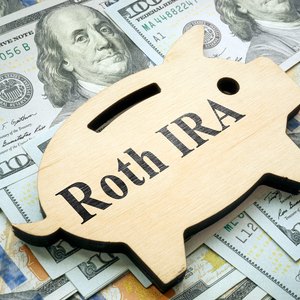
A Public Employee Retirement System (PERS) is a retirement system that falls under the defined benefit plan. The IRS says a defined benefit plan is based mostly on employer contributions. Many states use this kind of retirement system for public-sector employees.
For example, CalPERS, which serves the state of California, serves over 2 million state employees. It calculates their benefits based on the number of years they work, their age and their average monthly compensation for their highest earning years.
If you work for an employer that offers a defined benefit plan and then quit or retire before the designated qualified withdrawal age, you may want to do a pension rollover to a self-directed IRA or a regular one. Otherwise, you risk a PERS early withdrawal penalty.
What Is a PERS Early Withdrawal Penalty?
PERS, like other tax-advantaged plans, are qualified retirement plans that often defer taxes. Based on IRS rules, if you withdraw your money earlier than at the designated age (which could be 50, 52 or 55 depending on your pension system formula), you may have to pay an early withdrawal penalty.
That is an additional 10 percent tax on top of the state and federal taxes that are due on your defined benefits. However, if you qualify for an exception, you won’t pay the penalty, explains the IRS.
Therefore, your best option would be to roll over PERS into an IRA. You could opt for a Roth IRA, whose future distributions are usually tax-free since you pay taxes at the time of contribution. It's even better if it is self-directed. That way, you would have more freedom in what to invest in since defined benefit plans are often pretty limited.
How to Do a PERS Rollover to an IRA
There are certain steps you should take to do a PERS rollover to an IRA.
Open an IRA Account
Select an IRA custodian that offers the kind of products you would like to invest in. It could be a bank, insurance company, mutual fund company or brokerage firm. Then, open a Roth IRA account with them by completing all the required forms and providing the necessary supporting documents.
Remember that it may be easier to first open a traditional IRA account and then convert it to a Roth version later. If you aren’t sure what to do, ask your financial institution’s advisers for help but be prepared for extra paperwork.
Reach Out to Your PERS Administrator
You need to reach out to your PERS administrator. Inquire about the benefits you have and how you can withdraw the funds.
Before you do a PERS rollover to an IRA, you need to decide whether you want a lump sum or annuity. According to the Consumer Financial Protection Bureau, the former will provide all of your pension at once. On the other hand, annuities will pay you periodically (usually monthly) for a specified time (it could be for the rest of your life).
If you opt for a lump sum, you need carefully follow all the rollover rules. That way, the amount you roll over from one qualified account to another doesn’t count towards the annual contribution limit.
If you don't do that, those Roth IRA limits, which currently stand at $6,000 a year or $7,000 if you are 50 years or older, apply. So, the remainder of the improperly rolled over amount may be subject to both income taxes at ordinary rates and an early withdrawal penalty.
Apply for a Direct Rollover
Negative tax consequences like a 10 percent penalty can apply if you roll over your funds in any way but directly, according to the IRS. For that reason, you should apply for a direct rollover of your PERS funds into an IRA. By doing so, your funds will be transferred directly from the current pension plan to your IRA custodian.
But since most pensions are funded by pretax contributions, you would still need to pay taxes when rolling over your money into a Roth IRA. Although this can be a large expense, you benefit since you can withdraw the earnings tax-free later on.
However, you could choose an indirect rollover, which would allow you to handle the funds as long as you reinvest them in an IRA within 60 days. However, you should consult a financial advisor to learn about the tax consequences.
Report the Converted Amount
Once your benefits have been rolled over, be sure to properly report the, when doing your taxes, especially if you transferred the funds straight into a Roth account. In such a case, you need to account for the entire taxable distribution. That is the total amount of your distribution minus the after-tax contribution you paid into your pension account.
You will use the IRS form 1040 or 1040-SR to report a rollover to a Roth IRA. Then you can account for the rollover in boxes 5a – pensions and annuities and 5b – taxable amount. You can use the IRS Form 1099-R from your pension administrators to obtain the relevant information about your taxable rollover amount.
References
- CalPERS: Service & Disability Retirement
- IRS: Do I Meet an Exception to the Additional Tax on Early Distributions From IRAs or Retirement Plans?
- Consumer Financial Protection Bureau: Pension Lump-Sum Payouts and Your Retirement Security
- IRS: Pensions and Annuity Withholding
- IRS: Defined Benefit Plan
- IRS.Gov:Rollovers of Retirement Plan and IRA Distributions
Tips
- If your PERS custodian does an indirect rollover, you must redeposit the PERS check plus the 20 percent withheld within 60 days to complete the rollover. You will need to use personal savings to restore the amount to a full 100 percent.
- If you are employed until age 50 and maintain your funds with PERS, the IRS allows you to access the money at age 55 without early-withdrawal penalties. This is unique to 403b plans and not allowed in IRAs or 401k plans.
Writer Bio
I hold a BS in Computer Science and have been a freelance writer since 2011. When I am not writing, I enjoy reading, watching cooking and lifestyle shows, and fantasizing about world travels.

